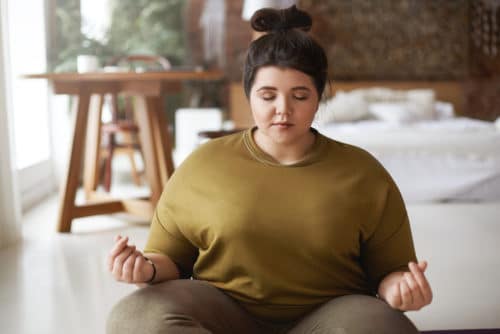 When I first started to practice meditation, I remember feeling extremely intimidated and unsure of the process. I hope that you will find the following tips helpful in your journey into mindful meditation.
When I first started to practice meditation, I remember feeling extremely intimidated and unsure of the process. I hope that you will find the following tips helpful in your journey into mindful meditation.
A couple of pointers for getting started in mindful meditation for beginners:
Small amounts, many times over
The most important part of establishing a mindfulness practice that will have a lasting impact on your life is consistency. This means making time to practice, formally and intentionally, every day, even if your practice is limited to a 5-minute seated meditation. Be intentional about planning your time for formal practice every day at a time and place where you can minimize distractions or interruptions, and can be confident that you will have adequate time and privacy to complete your practice with dignity and attention. People often schedule these practices into their morning and night routines. We seldom “find” time for new activities; instead, we must make time for our priorities.
Attitude change
Whatever preconceived notions you might have about practicing mindfulness- leave them behind. Those preconceived notions run the risk of running through your mind while you are in your practice “Shouldn’t I be feeling more peaceful by now?”, “I’m doing this wrong.”Instead try to follow the list of attitudinal foundations for mindfulness outlined in Jon Kabat-Zinn’s book about mindfulness, Full Catastrophe Living:
- Beginner’s Mind
- Non-Judging
- Acceptance
- Letting Go
- Trust
- Patience
- Non-striving
- Gratitude
- Generosity
Just show up
 Remember that there is no such thing as failing in meditation – It is simply a matter of showing up for yourself. Someday meditating with a clear and present mind might be easy to achieve, other times your mind might wander and keep wandering during your whole practice. Either way, you are still showing up for yourself. Mindful meditation is not about trying to empty your mind of all thoughts, instead think of it as a space where you can try to connect to the present moment INCLUDING your present thoughts, feelings, bodily sensations, and tensions.
Remember that there is no such thing as failing in meditation – It is simply a matter of showing up for yourself. Someday meditating with a clear and present mind might be easy to achieve, other times your mind might wander and keep wandering during your whole practice. Either way, you are still showing up for yourself. Mindful meditation is not about trying to empty your mind of all thoughts, instead think of it as a space where you can try to connect to the present moment INCLUDING your present thoughts, feelings, bodily sensations, and tensions.
Do a body scan
One of my favorite ways of checking in with myself throughout the day is by doing a body scan. A body scan consists of recognizing sensations and tensions in the body and then subsequently releasing that tension by clenching and unclenching those muscles. I recommend that you start by doing a 5 to 15-minute body scan and then gradually and with consistent practice work yourself up to longer body scans.
The best thing about meditation is that you can practice it anywhere: on a train on the way to work, in the waiting room at the doctor’s office, on a plane, etc. So what are you waiting for? Start practicing mindful meditation TODAY!
And if you’d like to talk to one of our therapists, please reach out.
Helpful resources:
“Mindfulness Practices for Everyday Living,” a podcast by MindfulSF, on Spotify provides body scans and other forms of meditation.
YouTube, 30-Minute Body Scan by Jon Kabat-Zinn:
YouTube, 45-Minute Body Scan by Jon Kabat-Zinn:


One Comment